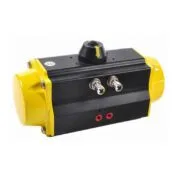
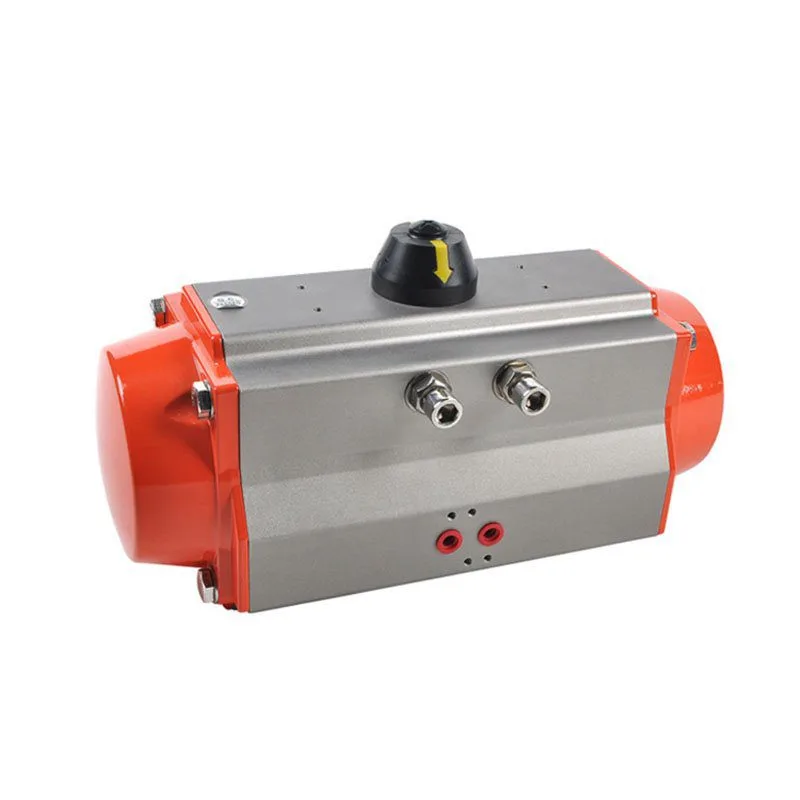
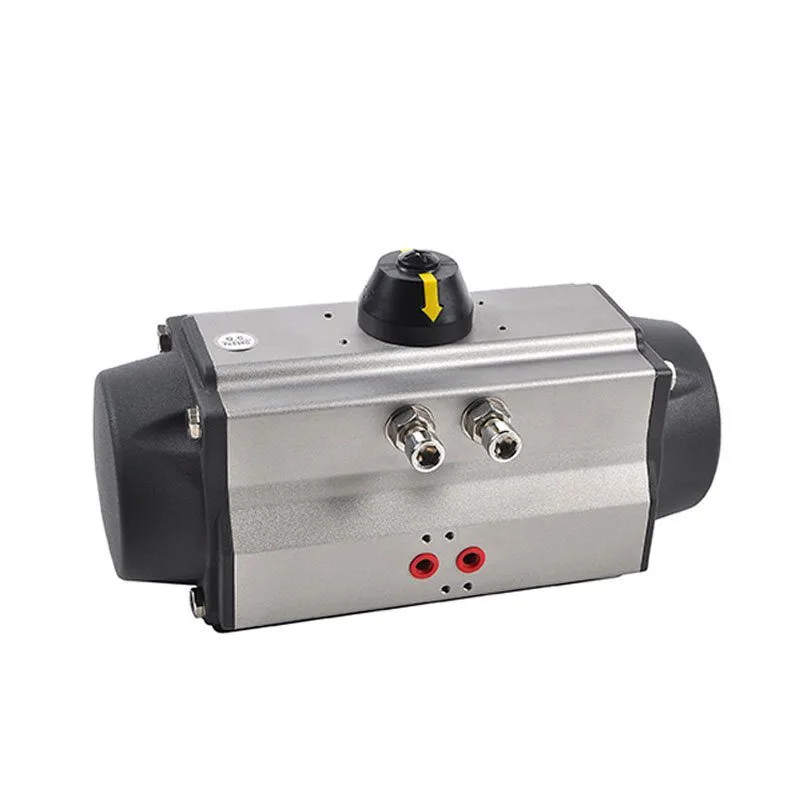
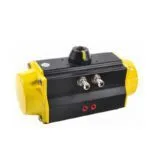

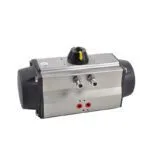
COVNA Spring Return Pneumatic Actuator
Spring Return Pneumatic Actuator with rack and pinion system. Opens with pneumatic pressure and interrupts with closure. Air supply power between 2 bar and 8 bar. Torque output between 5.7Nm and 2792Nm.
COVNA is a manufacturer of spring return pneumatic actuators and double acting pneumatic actuators for an array of uses.
Select the suitable actuator with our assistance!
Model
Actuator Type: Pneumatic spring return
Air Supply Pressure: 2.5 to 8 bar
Construction: Aluminum alloy
Rotary movement: 0 to 90 degrees
Surrounding Temperature: -40 to 160 degree Celsius
Protection Class: IP65
Features of Spring Return Pneumatic Actuators:
- Spring return pneumatic actuator with feature of safe
- Rack and pinion pneumatic actuator with high output torque
- Easy to install and change the number of spring
- Weather-proof
Working Principle Of Spring Return Pneumatic Actuators:
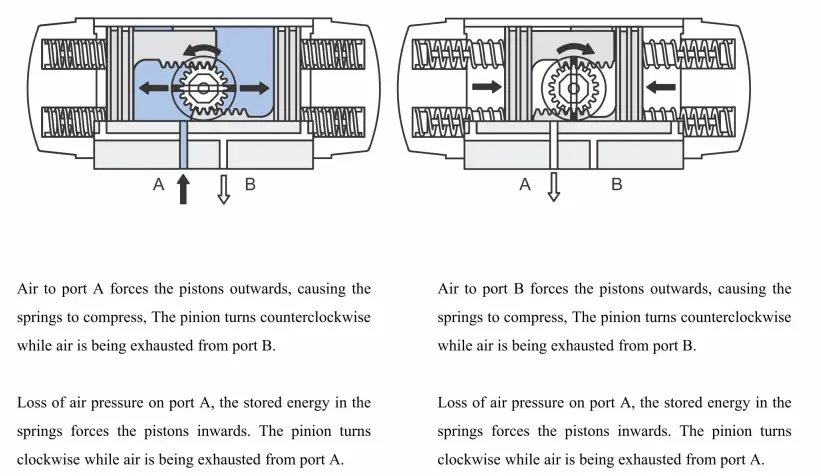
Dimension:
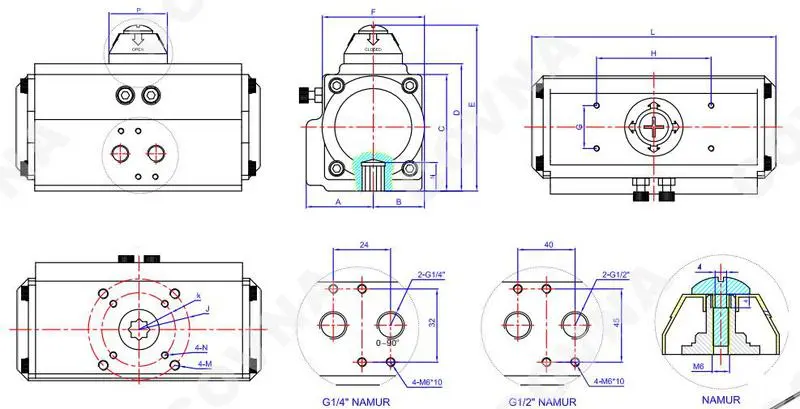
COVNA spring return pneumatic actuators are optimized for the following scenarios:
- Safety-critical systems: emergency shut-off of chemical/energy pipelines (spring automatically resets, valves safely close when power is off)
- Smart water treatment: pump station flow regulation (IP65 protection + aluminum body, anti-water mist corrosion)
- Food-grade production line: aseptic filling valve control (-40°C~160°C temperature resistance, in line with FDA hygiene standards)
- Packaging automation: high-speed opening and closing action (2-8 bar air pressure drive, precise 90° positioning)
- Fire protection system: sprinkler device fast response (2792Nm high torque, complete action cycle within 0.5 seconds)



